August 4, 2023
by Todd Shaver | Aug 4, 2023 | Instant News Flash
This Is Where The Growth Is
Amazon had a blowout second quarter, with a beat on both ends, and an upbeat guidance for the third quarter sending the stock soaring by over 10% following the results, adding $14 billion in equity to stockholders. The company posted $134 billion in revenues, up 11% YoY, compared to $120 billion a year ago, with a profit of $6.7 billion, or $0.65 per share, a phenomenal improvement over a loss of $2 billion. Is this company big, or what! $134 billion in revenue for the quarter is quite amazing. The last four years of revenue look like this: $280 billion, $385 billion, $470 billion, and $515 billion last year. We can see them doing $600 billion in revenue for this year.
The company’s AWS cloud computing business posted $22 billion in revenues, up 12% YoY, which marks a slight deceleration but is remarkable nonetheless, considering the broad-based slowdown in enterprise IT spending. This segment has helped Amazon stay profitable and hold its head above water for years and still continues to do so, contributing over 70% to the company’s overall operating profits.
Despite substantial headwinds, the AWS segment leads in terms of sales growth and profitability, owing to steady demand for cloud computing infrastructure for generative AI and Machine Learning applications. In addition to this, the company’s advertising business continues to grow by leaps and bounds, hitting $11 billion in revenues, up 22% YoY, ahead of Alphabet and Meta at 3% and 12% growth, respectively.
Its core e-commerce business produced sales of $60 billion, up from $57 billion a year ago. Aided by its Prime Day event during the quarter, which saw a record 375 million items being delivered to customers at its quickest-ever delivery speeds, the segment posted an operating profit of $3.2 billion, emerging from a loss of $630 million during the year-ago period.
Following a 64% YTD rally, the stock still trades at a reasonable 2.5 times sales, offering plenty of value for investors. As it remains focused on unlocking value across its massive landed base, we expect its margins and profitability to consistently improve going forward, opening up avenues for dividends and buybacks. The company ended the quarter with $64 billion in cash, $180 billion in debt, and $54 billion in cash flow. Our Target is $205, the highest on the Street. We’re over 10% closer to that today. Our Sell Price is: We Would Not Sell Amazon.
February 5, 2023
by Todd Shaver | Feb 5, 2023 | Instant News Flash
Don't Believe The "Uninspiring" Part
Retail giant Amazon ($103) suffered after reporting its fourth quarter results last week even though $150 billion in revenues came in up 9% YoY compared to $137 billion a year ago. Even so, the company only posted a profit of $300 million or $0.03 per share, a sharp decline from the $14.3 billion or $1.39 per share it posted a year ago. This was a mixed quarter, with a beat on the top line, and a huge miss on consensus estimates at the bottom.
The company’s slowest ever quarterly growth in its 25-year history, coupled with a weak guidance for the upcoming quarters led the stock down by over 8%. Amazon was faced with a broad range of headwinds during the quarter, taking a $5 billion hit to the top-line from unfavorable foreign exchange rates, followed by supply-side issues owing to persistent lockdowns in China that have since come to an end.
Amazon’s full year figures were interpreted as equally "uninspiring," with revenues at $514 billion, up 9% YoY, and a loss of $2.7 billion, or $0.27 per share, against a profit of $33 billion, or $3.24 per share during the same period last year. This was mostly the result of a $12.7 billion valuation loss from its stake in Rivian Automotive during the year, along with the excess capacity the Online Commerce side of the company acquired during the pandemic and is now winding down.
During the quarter, Amazon Web Services once again led the way when it comes to sales growth and profit contribution. Revenues from the segment stood at $21.4 billion, up 20% YoY, with a profit of $5.3 billion, flat from the year before. This, however, marked a substantial deceleration from previous years, and came in below analyst estimates of 28% YoY growth.
AWS growth has been slowing down since 2015, in the face of saturation and rising competition, but things fared worse than expected during the quarter, as most enterprises across the world have started to cut back on cloud and tech spending in the face of broader uncertainties. This trend is expected to continue this new year, as the global economy sits firmly on the precipice of a recession.
Amazon had a few bright spots in its quarterly results that still anchor its broader, long-term growth story. This mainly pertains to its burgeoning advertising business which posted 19% growth YoY, while Google’s and Meta’s platforms struggle with a slowdown. This relatively new service already makes up 7% of the global digital advertising market, with a long multibillion-dollar runway ahead.
The stock has witnessed a pullback of almost 50% since its peak of $185 in November 2021, and trades at a perfectly reasonable two times sales. The company is yet to deliver value in the form of repurchases or dividends, but this will change as the economy continues to grow and its high margin services business continues to flourish. With nearly $60 billion in cash, $165 billion in debt, and $40 billion in cash flow, this company is a force to reckon with.
Our Target is $205 and we would never sell the stock. Amazon has continued to deliver exceptional value to consumers across many fronts, with its Prime streaming service continuing to gain traction, plus new partnerships commenced with HBO and Discovery during the quarter. Yes, the company had a rough time last year, but the company is a leader in retail and groceries, as well as the Cloud, and they continue to launch newer, high margin businesses such as healthcare, financial services, and supply-chain management, among others. Management will do everything in its power to remain at the top of its game and thrive in the future of world commerce. We believe in this company.
September 16, 2019
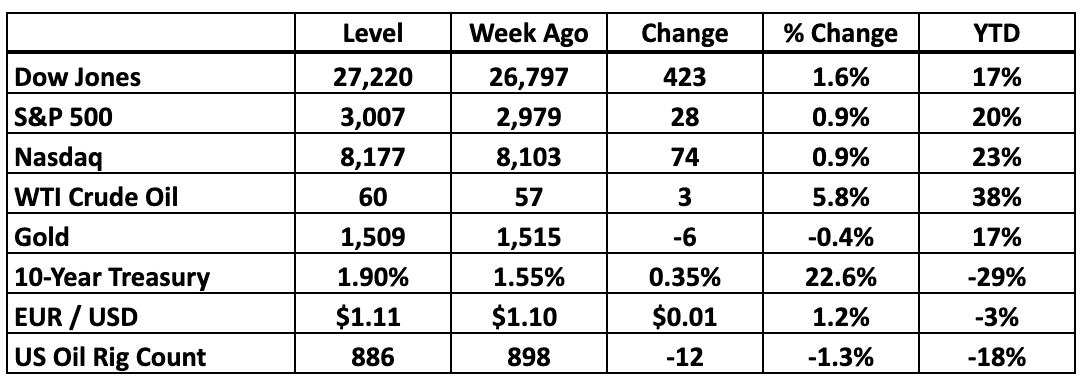
by Scott Martin | Sep 16, 2019 | Free Newsletter (Sent Weekly Monday at 12pm)
The Weekly Summary
Every so often, investors benefit from a simple gut check. When our stocks are going up, it's nice to verify that the gains are truly justified and there's room for more upside when the market winds blow in the right direction. And when our stocks go down, it's even more important to make sure that it's just the wind and not something fundamentally wrong with the underlying business or our calculations.
That's the kind of week it's been for us. While the S&P 500 kept climbing, the high-growth stocks that dominate our universe took a significant step back after months of outperformance. The Aggressive group dropped 9% and our High Technology portfolio fell 5%, overcoming mild strength elsewhere. Simultaneously, the recent flight to dividend stocks unwound as hints of inflation softened the Fed rate cut outlook, taking our REIT and Healthcare recommendations with it. Caught between the frying pan and the fire, the BMR universe as a whole took a step back to regroup.
We're still up 35% YTD compared to a 21% gain for the market as a whole. The High Technology group is still up a breathtaking 75% YTD. We aren't crying. With that level of outperformance, our stocks have plenty of cushion to absorb a few percentage points worth of reversal. Nonetheless, it's prompted a lot of rechecking throughout our portfolios. You're seeing the first results of that new round of analysis here. So far, we see no reason to change course.
But it's worth reflecting a bit on the change in the market weather. Almost exactly a year ago, warnings from Big Tech companies like Apple and Amazon triggered what eventually became a full-fledged 20% market slide. It took a full 12 months for the S&P 500 to recover its record-breaking nerve and get back to the age-old job of conquering new peaks.
Of course back then interest rates were moving up instead of down. Otherwise, the only thing that's really changed is that investors have now tolerated a full year of volatility, twisted Treasury yields, trade war and flat corporate earnings. The question now is how far their patience will stretch before they need proof of better times ahead.
From what we've seen, it can stretch a long way, especially with other asset classes yielding less than what ambient inflation steals from purchasing power in a typical year. Bonds, cash and gold are safe but don't offer the upside that stocks, despite their risk, offer in the long term. And as a result, we suspect we'll see money keep coming in from the sidelines to keep the stock rally alive, even if it's on a stop-and-start basis until positive catalysts emerge.
The Fed has become one of those catalysts. The next rate policy meeting ends on Wednesday and we're expecting at least a 0.25% cut. From there, we aren't ruling anything out. Odds are good Jay Powell and his fellow central bankers are in a similar position. They're watching the economy and the market. If it looks like the mood needs a little support, they're in a place where they can provide it.
We may need that support in the coming week if Saudi oil distribution remains shut down for long. Drone attacks on a key field have taken 5.7 million barrels a day out of the global supply chain, reducing the amount of petroleum available by 5% . . . roughly what Iran and Iraq pump together. Oil futures are soaring. We're pleased that we've remained bullish on [SUBSCRIBERS ONLY] for moments like this. Whatever happens, that fund should be a ray of light until the market mood improves.
There’s always a bull market here at The Bull Market Report! Want a free trial? Let us know! Let's get to work. It's going to be an interesting week.
Key Market Indicators
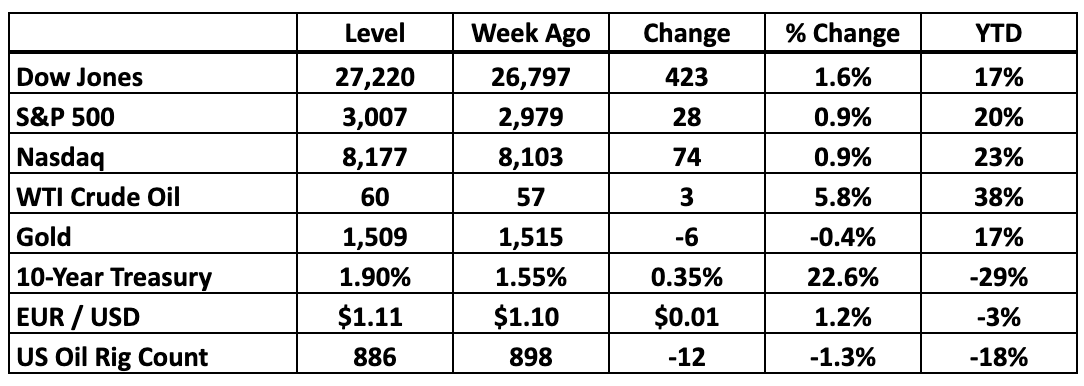
-----------------------------------------------------------------------------
BMR Companies and Commentary
The Big Picture: Short Sellers Take Cover
We discussed the market’s strategic gyrations in recent morning News Flashes but want to highlight a few of the most specific swings in sentiment around the stocks we recommend. After all, when money reverses direction for no clear reason, investors need to look deeper to determine whether the core proposition has shifted or just the market weather.
Only five BMR companies missed our earnings target last quarter. They’re up an average of 5% since releasing their numbers, so clearly there’s no direct correlation between fundamental disappointment and the direction stocks move in response. In fact, the BMR stocks that beat our forecasts actually dropped a little this season in line with the market as a whole.
Likewise, hitting the mark on revenue made no real difference in terms of the direction our stocks have moved this season. And in most cases, guidance for the coming quarterly confession cycle has held up better than usual. Strong stocks are getting stronger, but the highest flyers spent the last month under a cloud all the same.
Part of the pressure on these companies is pure macroeconomic dread. The recession narrative exploded last month as hedge fund algorithms interpreted the inverting yield curve as an automatic contraction signal, triggering liquidation of speculative positions as portfolio managers shifted into more secure postures. Suddenly growth fell from favor, taking many BMR stocks along with it.
A look at [SUBSCRIBERS ONLY] reveals what’s going on here. The growth outlook for this company has not changed and unless you assume that the global economy is going over a cliff, management is still on track to turn what we suspect will be 35% revenue growth next year into at least 65% earnings expansion. None of the dozen big Wall Street banks that track the stock have concluded that growth profile has flattened out one bit. If anything, they still tell their clients this stock is worth at least $140.
And yet that math no longer stretches the way it did a week ago when this was indeed a $145 stock. What’s changed is investors’ comfort with paying up to 190X earnings or 19X revenue for a company growing this fast. Again, cash flow shows no sign of deterioration but after the recent selloff this and similar stocks have cooled down dramatically from the “price” end of the price-per-earnings or price-per-sales calculations.
We see this as just another turn in the market weather. When the sentimental pendulum swings back, this company can command at least $145 again and investors who buy the dip will be happy. But in the meantime, BMR subscribers have done extremely well here, so even if this correction continues for weeks or even months, there’s little reason to complain. This was a $58 stock when we added it to our Buy List back in November. It’s still up nearly 90% this year alone.
For now, however, the short sellers will remain in control until they realize they’ve run out of rope. Short interest here has climbed to 11% of the stock, which means that sooner or later those investors need to commit $735 million to cover their positions and take their money. If they can’t do it gradually, they’ll need to do it fast, which raises the prospect of a squeeze if the stock starts moving up this week.
Quite a few of our recommendations are in a similar situation right now. We’d point to aggressive growth stories that have faced fierce headwinds after reporting perfectly reasonable 2Q19 numbers. It’s no coincidence that short sellers have committed to buy 9-11% of each stock, so there’s no reason for us to liquidate our positions here and make their victory any easier.
And then there’s [SUBSCRIBERS ONLY], where short interest has swelled to a huge and unsustainable 15% of the overall company. Institutional investors own 15% of the stock so even small positions like ours can make a difference in whether the shorts get what they need. If we hold on, we’ll see more sudden moves to the upside to balance the pain we’ve absorbed recently . . . and then the stocks will get back to work.
After all, these six stocks are still up an average of 30% YTD, beating the S&P 500 by 10 percentage points. We're the ones in a position of strength, and judging from the wild rebound [SUBSCRIBERS ONLY] launched last week, the short sellers should be the ones who are nervous. If you've been looking for a chance to expand your holdings of any of these stocks, now is the time. Remember, if the fundamental picture changes, we'll tell you. And unless that picture changes, it's just the wind blowing against extremely constructive cash flow trends.
NOTE: In our weekly paid subscription Newsletter, we do between 5 and 7 SnapShots and also support regular Research Reports. The last three stocks we recommended are already up 5% apiece. Plus, we have the Weekly High Yield Investor, whereby we discuss the 17 stocks in our High Yield and REIT Portfolios.
And to top it all off, we send News Flashes each day during the week. Got a question about any stock on the market? We'll answer. So if your favorite stock reports earnings or there is significant news, you will hear about it here first. If you want the whole picture, join the thousands of Bull Market Report readers who are making money in the stock market and subscribe here:
www.BullMarket.com/subscription
It’s only $249 a year, and later this year we will be raising it to $499 or even $999 a year, it is just THAT valuable. But we will lock you in for life at this lower price.
Good Investing,
Todd Shaver, Founder and CEO
The Bull Market Report
Since 1998
Subscribe HERE:
www.BullMarket.com/subscription
Just $249 a year, soon to go up to $499. But you are guaranteed the SAME PRICE forever.
September 9, 2019
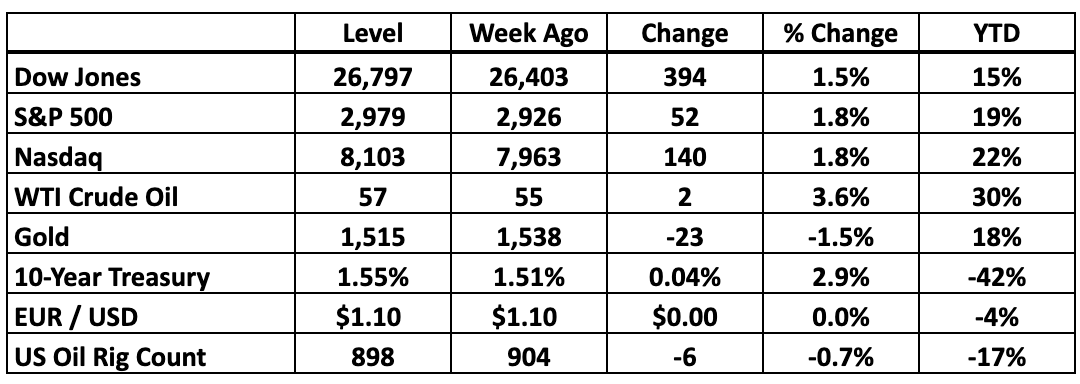
by Scott Martin | Sep 9, 2019 | Free Newsletter (Sent Weekly Monday at 12pm)
The Weekly Summary
The week after a market holiday is usually frenetic and this one was no exception, packing at least five days of volatility into an abbreviated calendar. Relief was the strongest note driving the S&P 500 and our stocks up close to 2%, with news that China has agreed to participate in trade negotiations in October cutting through the global clouds.
Closer to home, August job creation numbers were decent . . . a little lower than some hoped, but well within the range that usually reflects an ongoing economic expansion. We're a long way from recession territory even though corporate hiring plans remain on hold while the world waits for the trade war to resolve. In the meantime, any slippage in the job market will strengthen the Federal Reserve's argument to keep lowering interest rates in the absence of inflation.
We're less than 10 days from the next Fed meeting now. If we get the 0.25% cut most investors expect, it probably translates into roughly a 3.5% bump up for the S&P 500. Catch the market mood in the right place and that's going to take stocks back to record levels. It's hard to complain about that.
There’s always a bull market here at The Bull Market Report! Want a free trial? Let us know!
Key Market Indicators
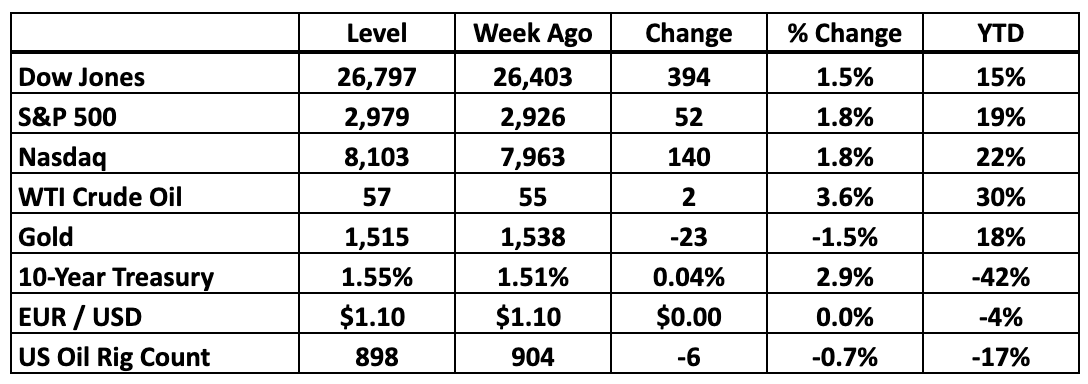
-----------------------------------------------------------------------------
BMR Companies and Commentary
The Big Picture: The Sector Map Spins
With earnings stalled across the S&P 500 as a whole for the past nine months, most of the market activity this year is best interpreted as Wall Street’s effort to pivot to match changing investment priorities. Popular growth sectors are currently out of favor as their expansion hits a wall. And with defensive themes already looking rich, there isn’t a lot of “value” around in the traditional sense.
However, a month from now the pendulum can easily swing again, pulling cash away from today’s hot spots and pushing it back into areas of the market that don’t look attractive at all. We’ve seen it play out again and again over the year so far and will undoubtedly see the cycle continue until clear leadership emerges.
Cut through the cycle and one thing is clear. Investors fleeing declining yields in the bond market are hunting replacements for lost income, parking money in dividend-paying stocks instead of rolling it into newly issued Treasury debt. They don’t want to take on a lot of additional risk in the process, so only the safest economic havens have benefited.
Over the last 12 months, the Utilities are up 15%, which is a staggering rally for a sector that rarely moves at all. We haven’t bothered with these stocks for two reasons. First, our more growth-oriented recommendations have done much better. Second, the Utilities don’t actually pay much. Dividends across the sector only added up to 4% a year ago and now that the stocks have rallied they don’t even pay 3% a year. That’s not worth locking in.
Similar logic carries to the Consumer Staples and Real Estate sectors, both of which have rallied 13% over the last 12 months. We love Real Estate because the yields tend to be much higher and a year ago the stocks were deeply depressed. Where are the REIT bears now? We don’t hear them.
Otherwise, it’s been a dull year for the market. Technology has gained ground because that’s where the long-term growth is. Consumer Discretionary stocks have also done well because that’s where Amazon is. And Communications is all about Social Media stocks recovering from a terrible 1H18. Healthcare, Materials, Industrials, Financials and especially Energy have all suffered.
Again, this isn’t about relative growth or value. Healthcare, for example, had a huge 2Q19, with the sector as a whole reporting 9% stronger earnings than what we saw the previous year. That’s usually a catalyst to push the stocks into a rally. This time around, the group went nowhere. The Financials told a similar story.
For the long term, the Financials are also extremely attractive on a pure earnings basis. The big Banks and Insurance carriers are still growing at a healthy 5% rate, but as long as the yield curve is unsettled few investors want to go near the stocks. The sector barely commands a 13X earnings multiple now, half what we see in most other areas of the market. Energy doesn’t look much stronger. They’ll recover, but until they do, we see little point in widening our sector-weight Special Opportunities exposure to either group, no matter how “cheap” they look today. (We’re not fond of that word.)
So what does this mean? If you tried to capture growth this year on a sector level, you’ve been disappointed. Our strategy of selecting the right stocks regardless of sector has paid off a lot better. BMR recommendations have climbed 20% over the past 12 months. And while we're heavy on Technology, that sector as a whole has been no prize. Going all over the market map has given us the freedom to outperform. We're looking forward to more, even if the market as a whole keeps grinding its gears.
There’s always a bull market here at The Bull Market Report! Want a free trial? Let us know!
NOTE: In our weekly paid subscription Newsletter, we do between 5 and 7 SnapShots and also support regular Research Reports. The last three stocks we recommended are already up 5% apiece. Plus, we have the Weekly High Yield Investor, whereby we discuss the 17 stocks in our High Yield and REIT Portfolios.
And to top it all off, we send News Flashes each day during the week. Got a question about any stock on the market? We'll answer. So if your favorite stock reports earnings or there is significant news, you will hear about it here first. If you want the whole picture, join the thousands of Bull Market Report readers who are making money in the stock market and subscribe here:
www.BullMarket.com/subscription
It’s only $249 a year, and later this year we will be raising it to $499 or even $999 a year, it is just THAT valuable. But we will lock you in for life at this lower price.
Good Investing,
Todd Shaver, Founder and CEO
The Bull Market Report
Since 1998
Subscribe HERE:
www.BullMarket.com/subscription
Just $249 a year, soon to go up to $499. But you are guaranteed the SAME PRICE forever.
September 3, 2019
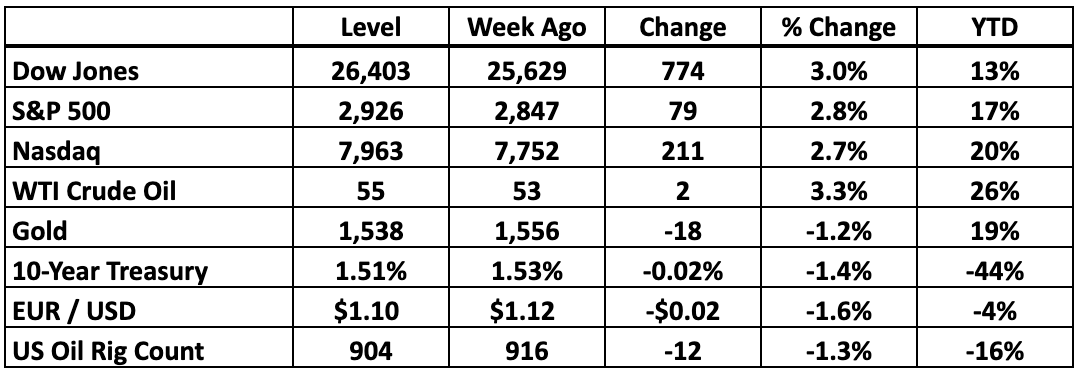
by Scott Martin | Sep 3, 2019 | Free Newsletter (Sent Weekly Monday at 12pm)
The Weekly Summary
Last week brought a volatile month to a relatively quiet close, with stocks recovering a lot of lost ground in an almost-uninterrupted surge. Evidently concerns about the Treasury yield curve inverting were only a smoke screen for investors who were simply bored with the diplomatic dithering around the trade war and looking for a reason to park their assets. Now that summer is over, Wall Street is ready to get back to work.
Admittedly, the yield curve is still inverted, earnings for S&P 500 companies have gone nowhere for three quarters in a row and the trade war casts as long a shadow over the global economy as ever. However, that's nothing new. The curve flattened out a year ago and tariffs have been in force for roughly the same period of time. Anyone who bought the market then and sold last month has to reckon with the fact that the fundamentals didn't change in the meantime.
The only thing that changed was sentiment. That's why we suspect last month was more a matter of exhaustion than actual dread. After all, the Fed has already relaxed interest rates once and is now only two weeks from what most of us suspect will be another rate cut. The environment is more aggressively weighted to the upside than it has been all year.
We suspect the S&P 500 will recover the 1.6% it is down from July soon. From there, the clock starts ticking before a fresh earnings season gives the market its next real shot at year-over-year traction, earnings growth and ultimately sustainable upside. As far as we're concerned, the party never stopped for our stocks, at least from a fundamental perspective. When the market as a whole gets back in the groove, we're looking forward to what will follow.
There’s always a bull market here at The Bull Market Report! Want a free trial? Let us know!
Key Market Indicators
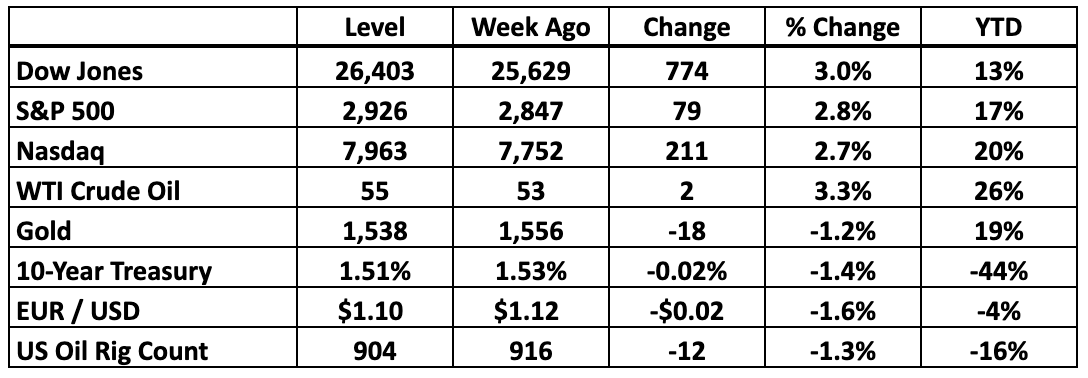
-----------------------------------------------------------------------------
BMR Companies and Commentary
The Big Picture: No Earnings Recession Here
While we’re still eagerly awaiting one more report to wrap up our 2Q19 scorecard, for all practical purposes it’s time to start looking ahead to the cycle that starts six weeks from now. Once again, our outlook is strong even though the broad market has nothing to get excited about lately.
Given the headwinds blowing against Technology and Energy and the broader drag of unsettled trade policy, the S&P 500 is going to have a hard time avoiding a third quarter of year-over-year earnings decline. It’s not about a deteriorating economy. Revenue remains robust. Demand isn’t softening. Only the margins are under pressure.
However, a little pressure on the margins is enough to eliminate any immediate urgency around buying the market as a whole. Those stocks aren’t likely to race ahead of the fundamentals before the companies actually start raising the bottom line. The first realistic window for that happening opens in January, which in market terms is a long time away.
And then there are the stocks we recommend. Compared to what could easily become 3% lower earnings for the S&P 500, the BMR universe is currently tracking 13% growth in the current quarter. That’s more than enough to justify a rally season and even a little urgency to grab the most dynamic companies.
We admit that all of these numbers are just averages. A lot of our companies are coming off big growth spurts so the 3Q19 cycle will reflect some year-over-year declines. Amazon, Twitter and Twilio are currently in that category. They need a rest and have strong enough long-term profiles that we can afford to give it to them.
Others like Apple, Blackstone and Dropbox have already weathered a few quarters of margin pressure but as management pivots the comparisons are getting better. They’re on the edge of getting their growth grooves back. When they do, we’ll be here. Until then, however, the stocks are going to stay in a lower gear.
As usual, Technology is where the extremes are. We see the fastest overall growth in the High Technology portfolio, with its concentration of companies that are following dynamic business models at a much earlier stage than today’s Silicon Valley giants. Their glory years are still ahead, and they’re moving at high speed to make it happen.
Those giants dominate our Stocks For Success list, where we’re expecting only slightly better 3Q19 results than the market as a whole . . . good enough to outperform but not a recipe for a huge rally in the next few months. And then there’s the Aggressive list, where management continues to sacrifice immediate profit in order to capture massive revenue gains while they can.
Then there are the REITs, which are all over the map because of the way Real Estate accounting works to write down property values while passing most of the tangible income back to shareholders. Our recommendations here are tracking up to 340% earnings growth and down to 60% earnings deterioration, along with the full range of results in between. Even if we factor them out as too erratic on a quarter-by-quarter basis, we’re still looking for significant growth throughout our universe.
That’s what it takes to keep BMR stocks moving in the bullish direction even if the market as a whole stalls. All in all, 13% more profit than what these companies delivered last year logically translates into 13% upside for the stocks once investors are back in a buying mood.
The stocks we’ve had throughout the last year still need to gain 10% before hitting their collective peak. Some have soared while others have a lot of ground left to make up, but on a growth-adjusted basis multiples in our universe are much more attractive than ever.
The market as a whole, on the other hand, is clinging to a 4% year-over-year gain even though earnings have declined. That’s almost entirely a factor of more relaxed rate policy. If not for the Fed, there’d be no reason for the S&P 500 to make any headway at all.
Remember, the Fed is our friend as well. Lower interest rates help BMR companies as much as they help everyone else. And the math is clear. Everything else being equal, would you rather be in stocks with historical headroom and positive growth, or those that justify near-record levels with fundamentals that look stagnant at best?
Quarter after quarter, the companies we recommend keep moving forward. We’ve seen that translate into a lot of upside already, but as the fundamentals move up, the stocks inevitably follow. The rest is simply a matter of riding out the market’s mood swings.
NOTE: In our weekly paid subscription Newsletter, we do between 5 and 7 SnapShots and also support regular Research Reports. The last three stocks we recommended are already up 5% apiece. Plus, we have the Weekly High Yield Investor, whereby we discuss the 17 stocks in our High Yield and REIT Portfolios.
And to top it all off, we send News Flashes each day during the week. Got a question about any stock on the market? We'll answer. So if your favorite stock reports earnings or there is significant news, you will hear about it here first. If you want the whole picture, join the thousands of Bull Market Report readers who are making money in the stock market and subscribe here:
www.BullMarket.com/subscription
It’s only $249 a year, and later this year we will be raising it to $499 or even $999 a year, it is just THAT valuable. But we will lock you in for life at this lower price.
Good Investing,
Todd Shaver, Founder and CEO
The Bull Market Report
Since 1998
Subscribe HERE:
www.BullMarket.com/subscription
Just $249 a year, soon to go up to $499. But you are guaranteed the SAME PRICE forever.






